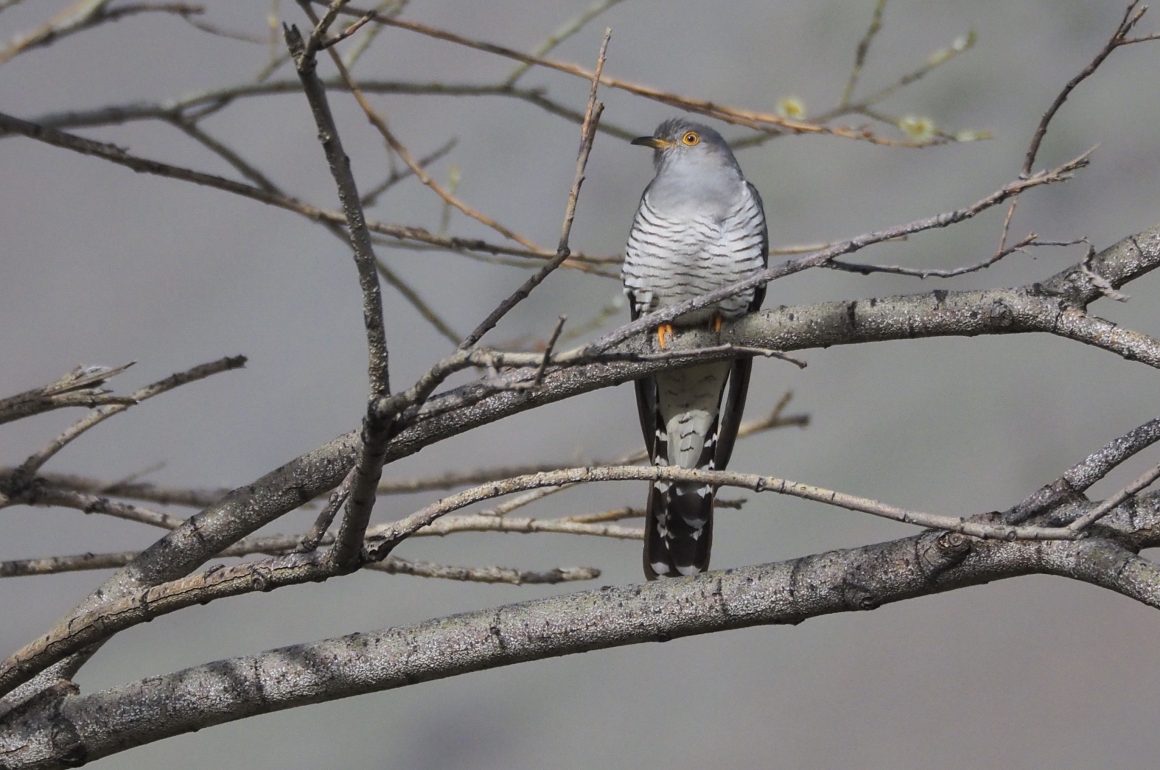
April is one of my favourite bird months, as it witnesses the arrival here in the UK of a host of species that we traditionally call summer visitors. The term summer visitor is misleading, for most of these birds are breeding visitors, and they will head back south as soon as they have bred. The cuckoo is the classic example. Radio-tagging has shown that some male cuckoos spend as few as six weeks here on their breeding grounds. They typically arrive back in April, but some will be heading south again in early June. However, most will remain longer, but they will have gone by the start of July.
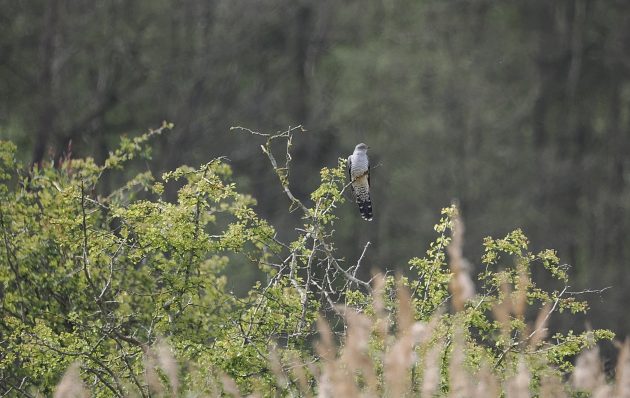
A Cuckoo feeding in Redgrave and Lopham Fen, Suffolk, 22 April
I heard my first English Cuckoo on 17 April, a few days earlier than usual. I have a suspicion that the early Cuckoos are passing birds, heading to breeding grounds farther north. On the 22nd I heard what I suspect is our local Cuckoo, singing in the fen. The fen has a good population of Reed Warblers, the Cuckoo’s favourite host species. Cuckoos have declined alarmingly in recent years in may parts of England, but here in north Suffolk we still have a healthy population, almost certainly because of the numbers of Reed Warblers to be found along our rivers.
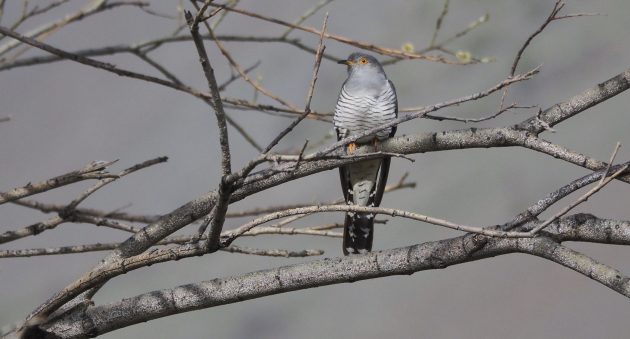
It’s easier to see Cuckoos before the trees are in full leaf
There’s no sound I enjoy more than that of my first singing Cuckoo. It’s a sign that spring is really here, and the dark days of winter are now behind us. It’s a time of new leaf and flowering, with the hedges soon to become covered in hawthorn blossom. The latter is often called May blossom, for it’s the month of May when it appears. It’s white and frothy, just like the cow parsley that suddenly appears in the hedge bottoms.
I’m writing this on 24 April. Regular readers may recall that I am trying to find 200 species in Britain this year: I’m currently up to either 165 or 167, depending on which list I choose to follow. BirdTrack (the British Trust for Ornithology’s equivalent of e-Bird) gives my total as 167, as it includes two species that I have recorded in the wild this year, but which are Category D (species that are worth recording, but not yet given formal admission to the British list) birds: the Indian Peafowl and the North American Wood Duck.

A Peacock in an English wood
There’s a self-sustaining population of feral Peafowl breeding on a local estate, and that’s where I saw my birds back in January. It was a flock of a dozen cocks, wandering across a field close to their breeding wood. The birds do well here, as the estate where they are to be found has a keepered shoot. The Peafowl undoubtedly benefit from the fact that the gamekeepers control the fox population, while the food put out for the Pheasants is also appreciated by the Peafowl.
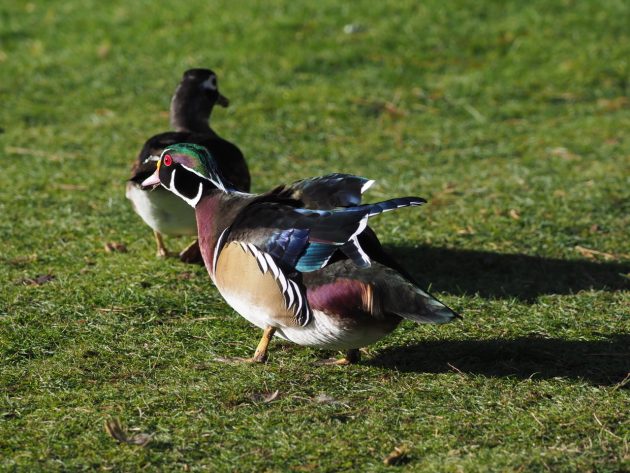
A pair of full-winged Wood Ducks, photographed in Suffolk in January
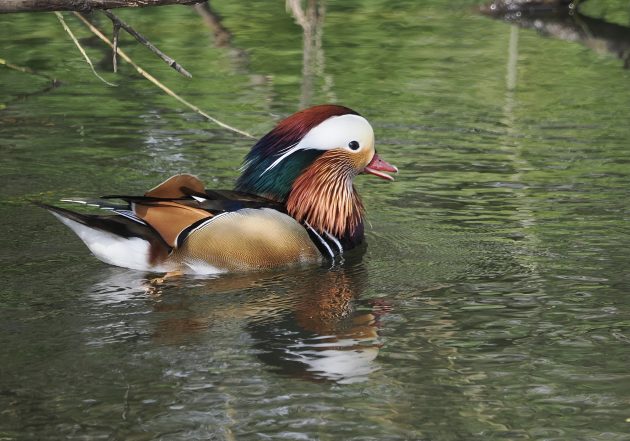
In contrast to Wood Ducks, Mandarins are well established in England. This bird was photographed on Suffolk’s Little Ouse river earlier this month
Wood Ducks are curious birds, as though they are popular in UK wildfowl collections, where they breed readily, they have never become established in the wild in the UK, unlike the closely related Mandarin. There have been many attempts to introduce them in the past, and there have been records of pairs breeding in the wild, but these populations have never become self sustaining. Why have they failed but the Mandarin has been so successful?
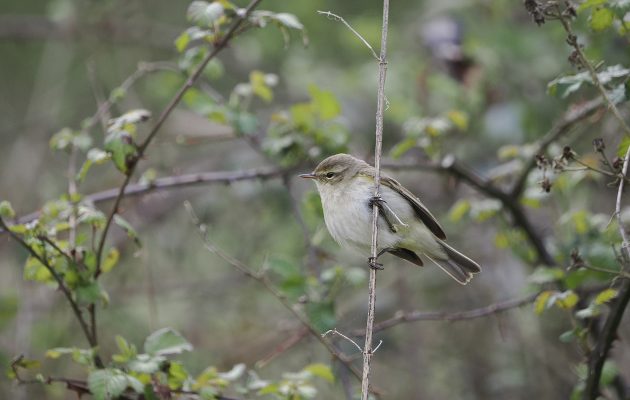
Chiffchaffs are thriving in England
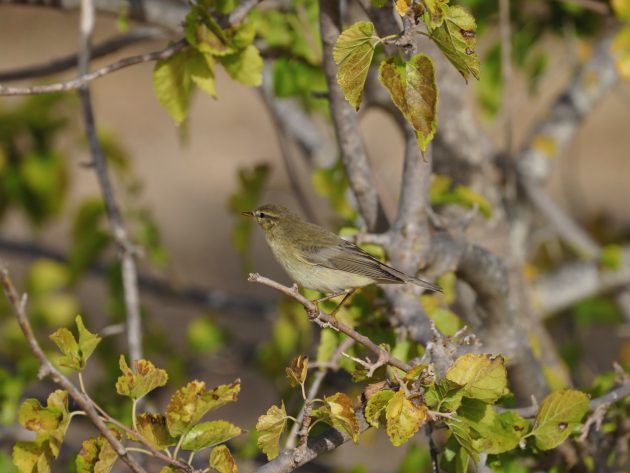
In contrast, Willow Warblers are declining. The two species are very similar in appearance, but the Willow Warbler has pale legs
At the time of writing I’ve seen most of the summer migrants I can expect, from the elusive Grasshopper Warbler to such common migrants as Swallows and House martins, though numbers of hirundines seem worrying low at the time of writing. This is in contrast to the Chiffchaff, the first of the migrants to return. I have never heard as many Chiffchaffs as I have this spring, for they are a bird that is thriving in 21st-century England. This is in sharp contrast to the Willow Warbler, a bird that looks almost identical to a Chiffchaff but is a much longer-distance migrant. I’ve seen Willow Warblers as far south as Kruger National Park, while few Chiffchaffs ever venture south of the Sahara. I have seen one or two in Kenya, but they are rare there. I have heard just a couple of Willow Warblers so far this spring. Willow Warblers do not, apparently, like our warming climate, which might explain why they are declining in both England and Wales, but increasing in Scotland.
There are still plenty of passage waders to look for. I may have seen Greenshank and Wood Sandpiper in Spain already this year, but I haven’t in England. Late April and early May witnesses the peak passage of Whimbrels through eastern England, and this is one bird that I hope to see in the next few days. Many of the arctic-nesting waders, such as Curlew Sandpiper and Little Stint, are much easier seen on their post-breeding passage, so if I miss them now I might well catch up with them later in the summer.
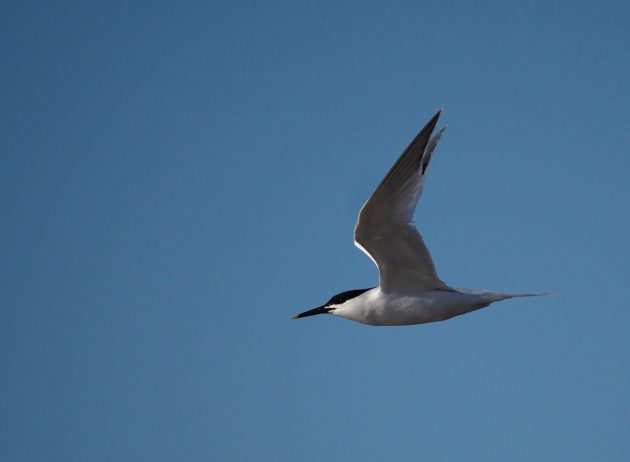
Sandwich Terns are always the first of the terns to return to Northern Europe
I’ve only seen one species of tern so far (Sandwich), so there are several more to go, while I’ve yet to see an auk of any species, nor even a Gannet. This lack of seabird sightings will be solved easily with a trip to Bempton Cliffs in Yorkshire in June. With just 33 (or 35) species needed to reach my target for the year, I reckon that I’m well placed to get there. Watch this space.
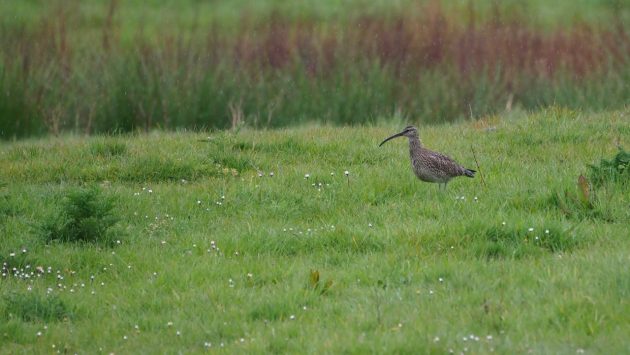
A migrant Whimbrel, photographed in North Norfolk in May 2021. I’ve yet to see my first this year


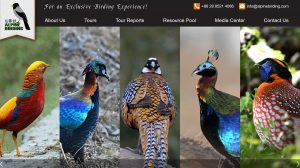
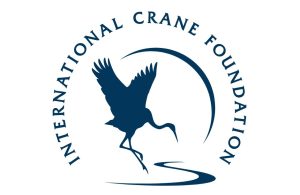

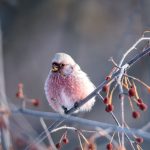
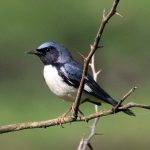
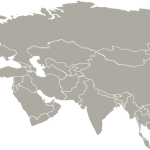
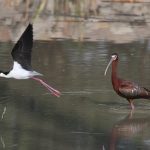
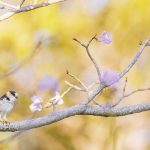
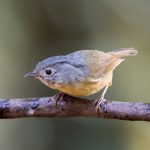
I fondly remember the first time I heard a Common Cuckoo — we were walking the Coast-to-Coast path and we heard it in Seatoller. May 2008 that was. Since then I’ve encountered many others around Europe, including the one in northern Norway in 2014 which was precisely emulating the drawing in the field guide by being fed by a Meadow Pipit.
As for your imported Wood Ducks: here in Western Canada those are common, and when a (presumably escaped) Mandarin Duck showed up, it tried to mate with the Wood Ducks. So probably you’ll have a similar situation there, in reverse. Keep your eyes open for hybrids.